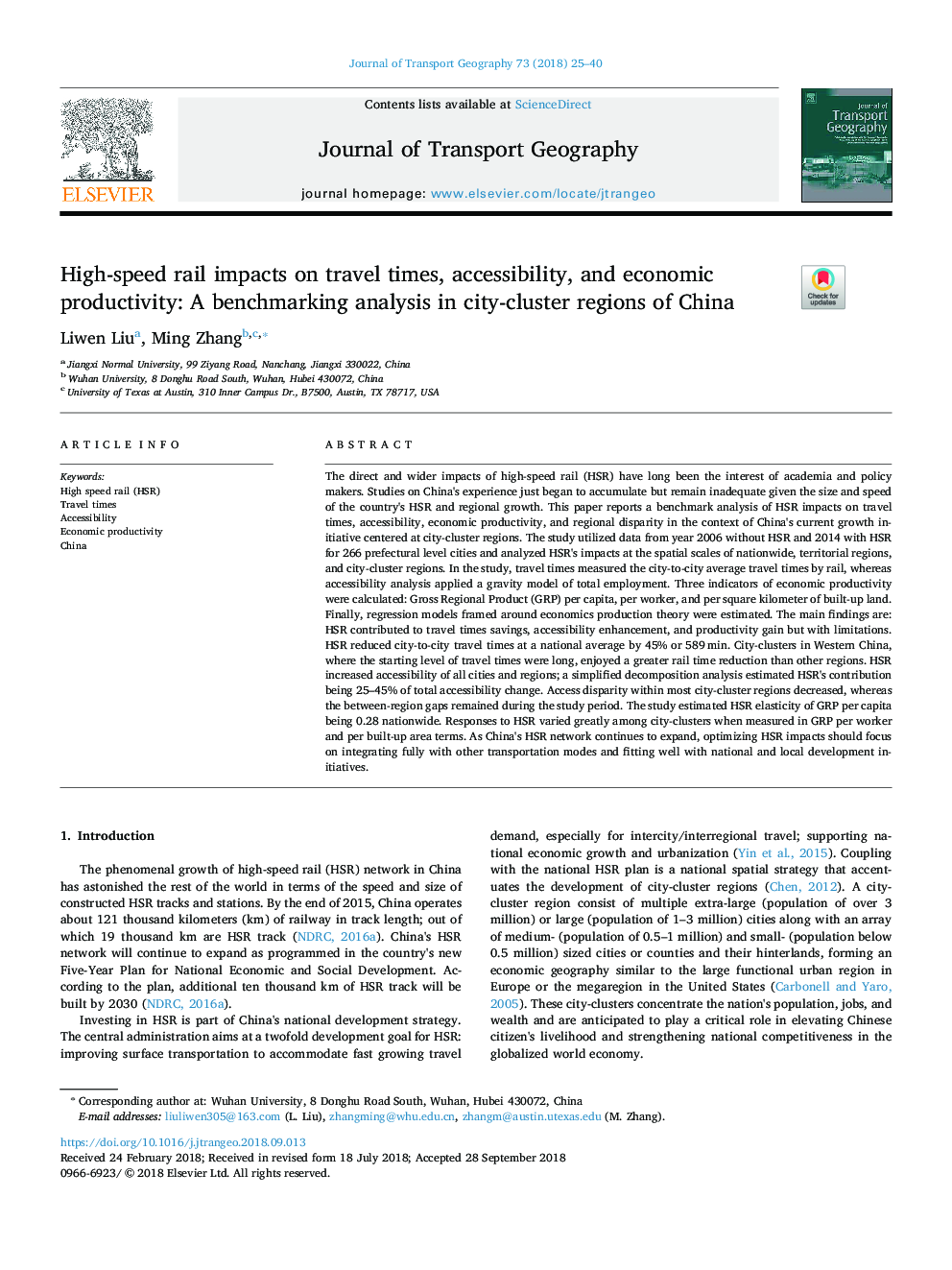| کد مقاله | کد نشریه | سال انتشار | مقاله انگلیسی | نسخه تمام متن |
|---|---|---|---|---|
| 11262977 | 1802849 | 2018 | 16 صفحه PDF | دانلود رایگان |
عنوان انگلیسی مقاله ISI
High-speed rail impacts on travel times, accessibility, and economic productivity: A benchmarking analysis in city-cluster regions of China
ترجمه فارسی عنوان
خطوط راه آهن با سرعت بالا بر روی زمان سفر، دسترسی و بهره وری اقتصادی تاثیر می گذارند: یک تجزیه و تحلیل معیار در مناطق خوشه ای چین
دانلود مقاله + سفارش ترجمه
دانلود مقاله ISI انگلیسی
رایگان برای ایرانیان
کلمات کلیدی
موضوعات مرتبط
علوم زیستی و بیوفناوری
علوم محیط زیست
علوم زیست محیطی (عمومی)
چکیده انگلیسی
The direct and wider impacts of high-speed rail (HSR) have long been the interest of academia and policy makers. Studies on China's experience just began to accumulate but remain inadequate given the size and speed of the country's HSR and regional growth. This paper reports a benchmark analysis of HSR impacts on travel times, accessibility, economic productivity, and regional disparity in the context of China's current growth initiative centered at city-cluster regions. The study utilized data from year 2006 without HSR and 2014 with HSR for 266 prefectural level cities and analyzed HSR's impacts at the spatial scales of nationwide, territorial regions, and city-cluster regions. In the study, travel times measured the city-to-city average travel times by rail, whereas accessibility analysis applied a gravity model of total employment. Three indicators of economic productivity were calculated: Gross Regional Product (GRP) per capita, per worker, and per square kilometer of built-up land. Finally, regression models framed around economics production theory were estimated. The main findings are: HSR contributed to travel times savings, accessibility enhancement, and productivity gain but with limitations. HSR reduced city-to-city travel times at a national average by 45% or 589â¯min. City-clusters in Western China, where the starting level of travel times were long, enjoyed a greater rail time reduction than other regions. HSR increased accessibility of all cities and regions; a simplified decomposition analysis estimated HSR's contribution being 25-45% of total accessibility change. Access disparity within most city-cluster regions decreased, whereas the between-region gaps remained during the study period. The study estimated HSR elasticity of GRP per capita being 0.28 nationwide. Responses to HSR varied greatly among city-clusters when measured in GRP per worker and per built-up area terms. As China's HSR network continues to expand, optimizing HSR impacts should focus on integrating fully with other transportation modes and fitting well with national and local development initiatives.
ناشر
Database: Elsevier - ScienceDirect (ساینس دایرکت)
Journal: Journal of Transport Geography - Volume 73, December 2018, Pages 25-40
Journal: Journal of Transport Geography - Volume 73, December 2018, Pages 25-40
نویسندگان
Liwen Liu, Ming Zhang,
